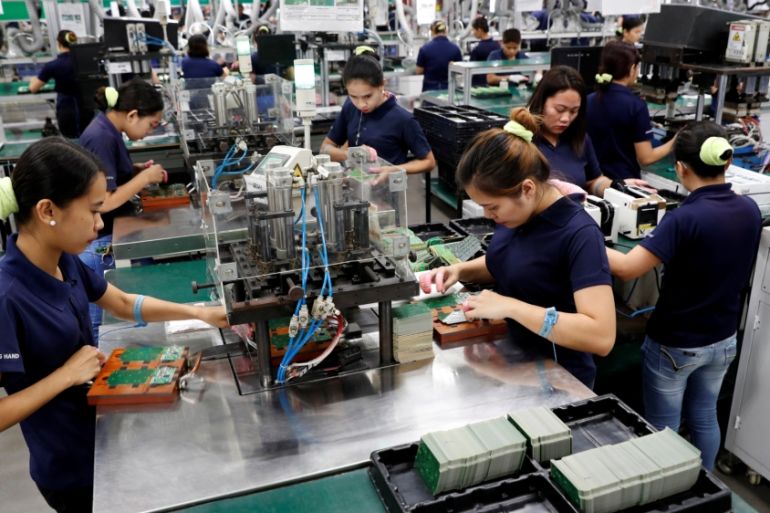Asian economies to contract in 2020 for first time since 60s: ADB
Asian Development Bank says regional GDP will contract 0.7 percent in 2020, with pandemic holding key to 2021 recovery.

Coronavirus-ravaged economies across the Asian Pacific will contract this year for the first time since the early 1960s, and a “swoosh-shaped” recovery next year could be derailed by a prolonged pandemic, the Asian Development Bank forecast on Tuesday.
Developing Asia – stretching from the Cook Islands in the Pacific to Kazakhstan in Central Asia – is expected to contract by 0.7 percent in 2020, marking “the first regional GDP contraction since the early 1960s” and throwing tens of millions of people into poverty, the Manila-based organisation said.
Keep reading
list of 4 itemsWhy is Biden ratcheting up the trade war with China?
Ivorian cocoa farmers ‘barely survive’ while chocolate company profits soar
Singapore Airlines death: Is climate change making air turbulence worse?
In June, it estimated economies would expand 0.1 percent.
“The downturn is across the board, with almost three-fourths of regional economies projected to contract – the largest such share in the past six decades,” the bank said in the latest update to its outlook.
While the vast region is expected to bounce back next year, with gross domestic product (GDP) projected to grow 6.8 percent, it will be “substantially smaller” than forecast before COVID-19 struck.
“The regional recovery will be L-shaped or ‘swoosh-shaped’ rather than V-shaped,” the bank said, noting a prolonged pandemic was the main threat to the outlook.
|
|
The bank warned that reimposing tough virus restrictions could hamper recovery and even trigger “financial turmoil”.
“While economies in developing Asia remain resilient, continued policy support is needed to underpin recovery,” ADB chief economist Yasuyuki Sawada said.
Pandemic control
Policy support packages announced to the end of August had reached a total of $3.6 trillion – about 15 percent of regional GDP, the bank said.
China, where the virus first emerged late last year before developing into a pandemic that has infected more than 29 million people worldwide, is one of the few economies in the region to expand.
After successfully beating back the disease, the world’s second-largest economy is forecast to grow 1.8 percent this year and 7.7 percent in 2021, the bank said.
In contrast, India, which is one of the hardest-hit countries in the world with more than 4.8 million cases despite lengthy lockdowns, is expected to see its economy shrink by nine percent in 2020 before expanding by eight percent next year.
“The path and speed of economic recovery in regional economies will depend on many different factors, the most important of which is [the] ability to control and contain the pandemic,” the ADB said.
Recap:
🔷Asia's economies will contract for the first time since the early 1960s.
🔷The downturn is broad-based—3/4 of the region's economies expected to contract. China the exception.
🔷 Recovery to resume next year.Go here for full report and more ▶️ https://t.co/9QlMNY7upu pic.twitter.com/NdSxCkxg8M
— Asian Development Bank (@ADB_HQ) September 15, 2020
As regional economies contract this year, the number of poor people will probably rise by at least 78 million, reversing a reduction in poverty over the past three to four years, according to the report.
Inflation, however, is expected to remain “muted” owing to depressed demand and lower oil prices, it said.
Another relative bright spot was trade. While the region’s exports had contracted, they had fared better than those in the rest of the world thanks to stronger demand for COVID-related health supplies and electronics.